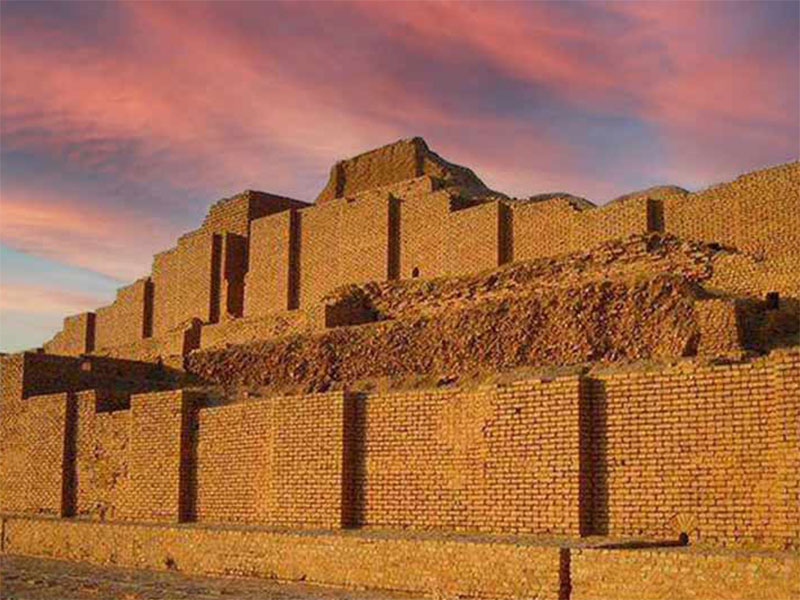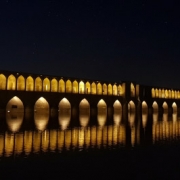Chogha Zanbil Ziggurat, the Pyramids of Iran
What do you know about the first Iranian historical monument registered in UNESCO? Iran is one of the oldest civilizations in the world, governed by many rulers and kingdoms. Today we can see historic constructions and religious temples from different periods in Iran. Religious buildings have always been a great attraction to tourists. Here, we are going to introduce a Ziggurat named Chogha Zanbil which is a glorious monument of the past.
Location and History
Chogha Znabil Ziggurat is located in Susa city, Khuzestan province, which is 115 km away from Ahvaz. Historically, the construction of this building dates back to 1250 BC. After entering the city, you can follow the signs along the way to reach the Ziggurat of ChoghaZanbil and visit it. But, what are the Ziggurats? Ziggurats were respected and sacred buildings to people of that time, and they prepared the best materials, including bricks and clay, to build such structures.
How old is Chogha Zanbil? A glance into its history indicates that it was built during the Ontash Napirash, the king of the Elamites. The discovery of the construction is also an interesting story. At that time, a geologist named Jacques Demorgan began drilling for oil around Susa, but after a while, he found the ancient bricks and sent them to archaeologists. Years later, archaeological excavations led to the discovery of Choghaznabil.
Architecture
As we mentioned, Chogha Zanbil was once buried under the ground. That is why we observe it in the form of a hill. In the structure of the Chogha Zanbil, a pyramidal and stepped architecture is evident; It is made of several floors and has dozens of nested corridors and rooms. The area around the building is paved to give an excellent view. You can see circular platforms in the northeastern, northwestern, and southwestern parts of this building. There are sundials built to detect time and seasons. The interior of the building is made of clay, and the exterior wall is made of brick. Bricks are used to protect the clay from erosion. They are all baked, and inscriptions are written on them. This place has three zones marked by fences, and visitors can enter the first one.

Chogha Zanbil, a pyramidal and stepped architecture in Susa, Iran.
One of the wonders of Chogha Znabil is the water supply system in this ancient temple. The waterways have been developed along the entire building to protect it from the torrential rains of Khuzestan. Also, the four corners of the Ziggurat are in the direction of the four geographical directions, and this shows that the builders knew the north, south, east, and west well.
Mysteries
There are stories and secrets behind every historical and religious place. It would be a good idea to read the mysteries about the Chogha Zanbil. The people of ancient Elam believed that Ziggurats were a bridge that took men to heaven and brought them closer to the gods step by step. On the other hand, some supposed that gods came to the Earth from heaven with the help of the Ziggurats. That is why the building has stepped architecture.
In ancient times, people believed in several gods. The people of ancient Elam accepted that many gods controlled and ruled the world and that every city had a god who was in charge of protecting it. People built temples for the gods in the city center. But inside the Ziggurat of Choghazanbil, statues of the Inshushinak and Napirisha gods were kept. During the festivities, many gifts were given to the gods by the people.
There are more interesting facts about this ziggurat. As we said, the ground around the ziggurat has been paved. Archaeologists have found traces of a child’s foot on some parts of the paving, the cause of which is still unknown. It is scary and exciting at the same time! Evidence suggests that the Choghaznabil ziggurat was seized and destroyed by Assyrian Banipal before it was completed. He stated in an inscription:” I broke the ziggurat of Susa, which was glazed with azure bricks. I razed the temples of Elam to dust. I turned Susa into a ruin. The human voice and joy were destroyed by me.”
Have you ever noticed the shape of the building? The ziggurat is square. Because the number four is considered sacred in numerical architecture. It is inspired by four main directions, four seasons, and four elements of nature.
The Best Time to Visit Chogha Zanbil
You can visit Susa from late March to the end of April. You can travel to Chogha Zanbil Ziggurat by car or tour; since no trains, buses, taxis pass through it. October to April is the best time to visit the ziggurat. If you want to tour on a sunny day, it may be best to bring an umbrella with you. Wearing light-colored sleeves will help you withstand the heat better. Consider the early hours of the day to visit so that the heat does not bother you. we would welcome any inquiry you may have about traveling to Iran, please check out Iran tours & do not hesitate to contact us at info@idt.ir. You are also recommended to visit other places in Susa like the historical castle of Susa, the Apadana Palace, and the Shrine of Daniel the Prophet (PBUH). If you have planned o visit Iran, here is the link to Iran online visa.


 Iran Doostan Tours
Iran Doostan Tours










Leave a Reply
Want to join the discussion?Feel free to contribute!